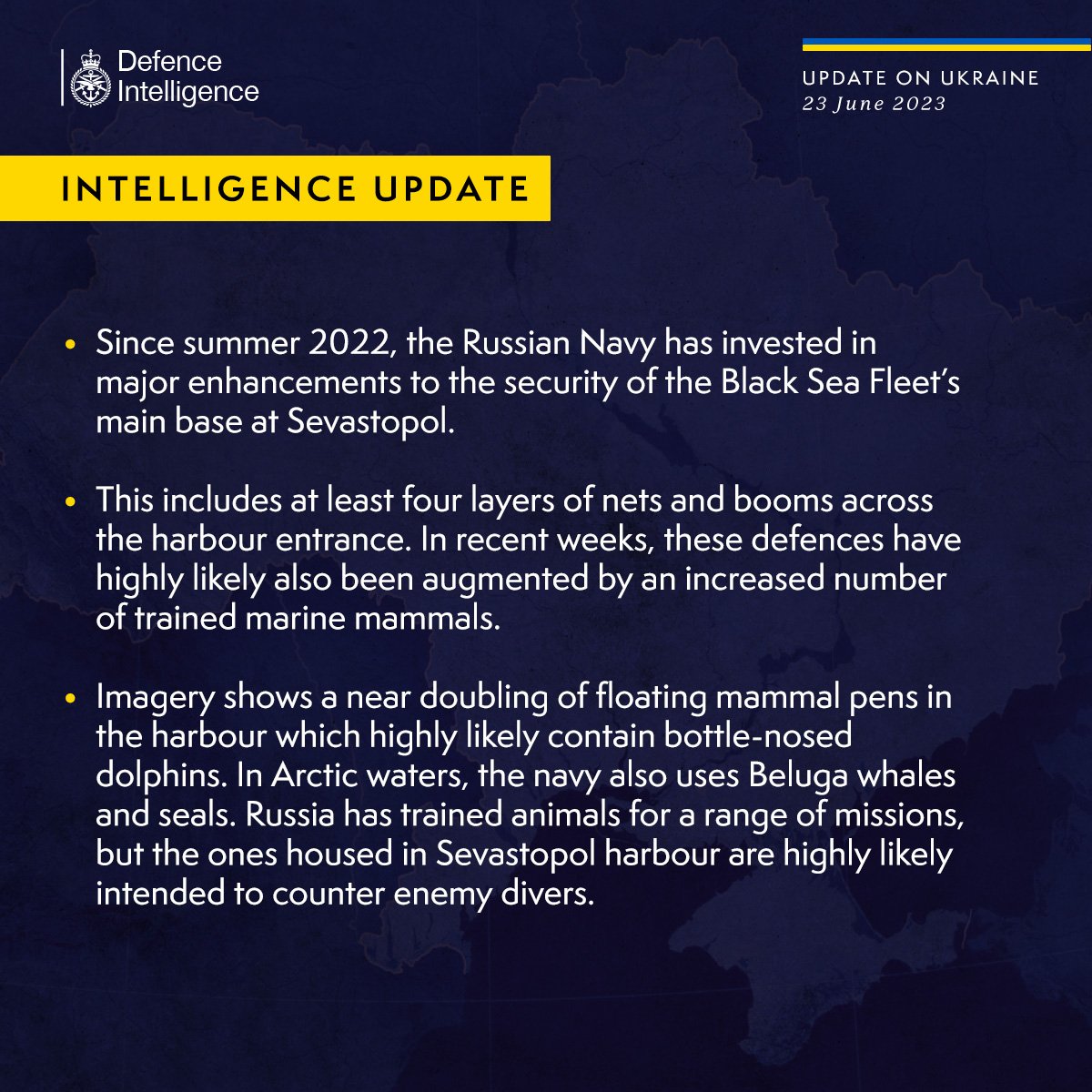Wait, what??? I have never heard of such a thing... They use trained marine animals?!
Ukraine
News and discussion related to Ukraine
🇺🇦 Sympathy for enemy combatants is prohibited.
🌻🤢No content depicting extreme violence or gore.
💥Posts containing combat footage should include [Combat] in title
🚷Combat videos containing any footage of a visible human involved must be flagged NSFW
❗ Server Rules
- Remember the human! (no harassment, threats, etc.)
- No racism or other discrimination
- No Nazis, QAnon or similar
- No porn
- No ads or spam (includes charities)
- No content against Finnish law
💳💥 Donate to support Ukraine's Defense
💳⚕️⛑️ Donate to support Humanitarian Aid
🪖 🫡 Volunteer with the International Legionnaires
This is common practice soviet era: https://en.wikipedia.org/wiki/Military_marine_mammal
Wow that is interesting, I have never heard of it! Edit: The article seems to think the Russian/Ukrainian dolphin program was no longer a thing, which makes the above post even more fascinating.
They are speculating that Hvaldimir was a "spy whale" from the Russian navy.. https://en.m.wikipedia.org/wiki/Hvaldimir
Interesting. You’d think acoustic sensors would be an easier implementation


